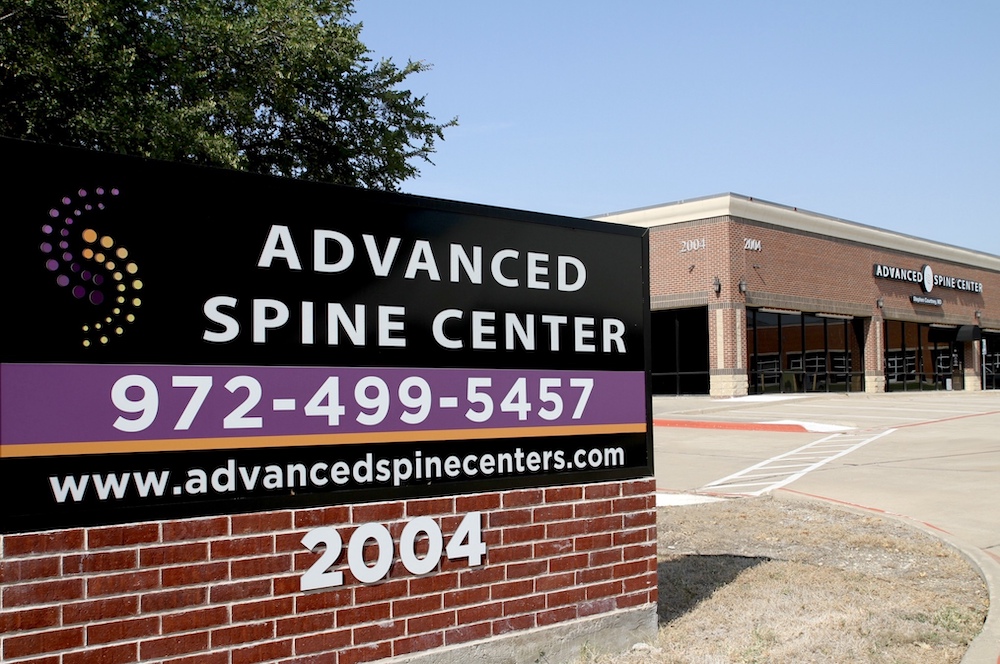Specialties
Table of Contents
Cervical Disc Herniation Treatment in Plano
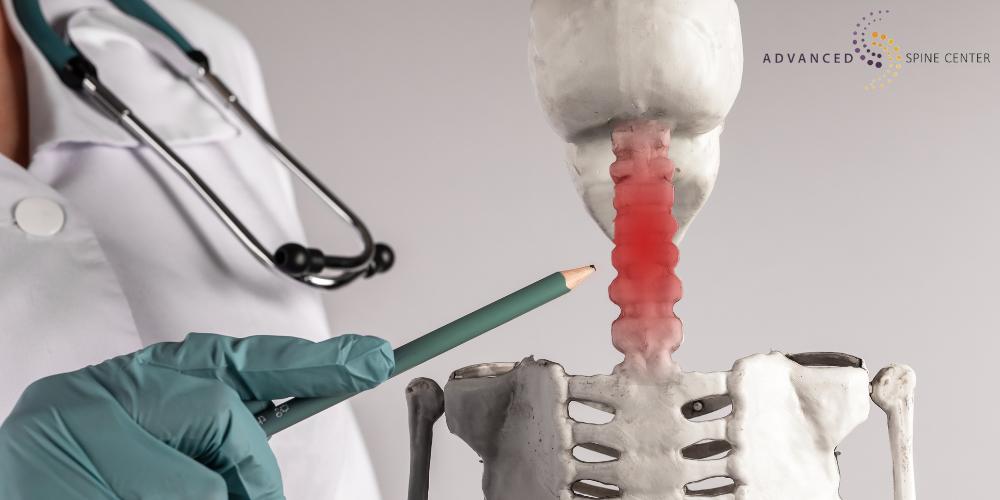
At the Advanced Spine Center, our Plano orthopedic spine surgery clinic is dedicated to providing exceptional care and advanced treatment options for patients experiencing neck pain. We’re here to diagnose and treat symptoms related to cervical herniated discs. Cervical herniated disc treatment may involve surgical or nonsurgical solutions depending on its severity.
Our experienced team is here to guide you through every step of your journey to relief and recovery. At the Advanced Spine Center, we are committed to helping you regain mobility, alleviate pain, and restore quality of life. To schedule an appointment with us, please call our office at 972-499-5457 today.
What Is a Cervical Herniated Disc?
A cervical herniated disc is a rupture of one of the vertebral discs in your neck. A herniated disc can allow disc material to press harmfully against the spinal nerves. When the cervical disc compresses the spinal nerves, this can lead to serious symptoms like pain, numbness, tingling, and weakness in the neck and arms.
Anatomy of the Cervical Spine
The cervical spine is a complex structure in the neck that consists of seven vertebrae. These vertebrae are labeled C1 through C7, and they make up the top portion of the spinal column. They support the head, facilitate a wide range of motion, and protect the spinal cord. In the following sections, we briefly outline the main components that make up the cervical spine.
Cervical Vertebrae
The first vertebra (C1), also known as the atlas, and the second vertebra (C2), known as the axis, have unique shapes that allow the head to pivot and tilt. The subsequent cervical vertebrae (C3-C7) have a more uniform shape, characterized by a small body, bifid (split) spinous processes, and large vertebral foramina (openings) to accommodate the cervical spinal cord.
Cervical Vertebral Discs
Vertebral discs are tough, elastic pads that act as shock absorbers for the vertebrae. They cushion the vertebrae and allow the spine to twist and bend. Each intervertebral disc has a tough, fibrous outer wall and soft inner nucleus.
Spinal Cord and Spinal Nerves
The spinal cord runs through the cervical spine within the vertebral canal formed by the vertebrae. This critical part of the central nervous system transmits signals between the brain and the rest of the body. Emerging from the spinal cord between the cervical vertebrae are the spinal nerves, which branch out to various parts of the body.
These nerves send sensory information back to the brain and motor commands to the muscles. In the cervical spine, these nerves control functions and sensations in the arms, hands, and parts of the chest.
What Causes a Herniated Disc in the Neck?
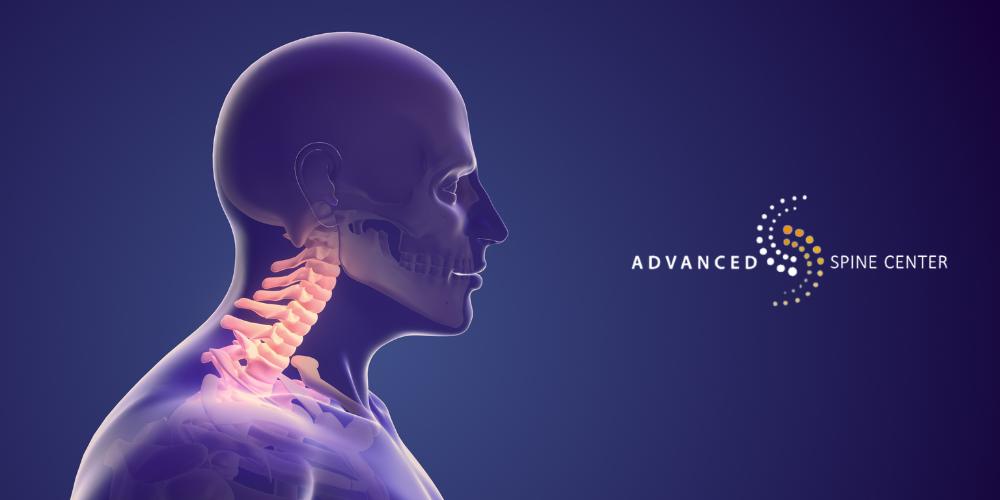
A herniated disc can result from the normal wear and tear of aging, which we sometimes refer to as cervical disc disease. Often, a cervical herniated disc occurs from heavy lifting or sudden, damaging motions. A traumatic spine injury can also cause it.
In a typical rupture, small cracks or tears form in the disc’s outer wall. The soft material in the nucleus pushes through this weakened area. This disc material can bulge into the spinal canal. It can press against the spinal cord. It can also press against nerve roots.
Is a Bulging Disc in the Neck Serious?
Cervical disc herniations are not always serious, but they can potentially lead to serious health issues if not properly addressed. Many individuals do not experience symptoms from cervical disc herniation. However, the condition can become serious if the bulging disc places pressure on the surrounding nerves or spinal cord.
Failing to treat a cervical herniated disc in a timely manner can lead to complications such as cervical radiculopathy. Cervical radiculopathy occurs when a herniated disc or any mass presses on a nerve root, leading to pain and neurological symptoms along the path of the nerve. Symptoms of cervical radiculopathy can include sharp, radiating pain, numbness, tingling, and weakness along the arms, hands, or shoulders.
Without timely intervention, the continued nerve compression can result in chronic pain and potentially permanent nerve damage. A severely herniated disc can compromise the structural integrity of the cervical spine, leading to instability or the development of chronic conditions that impact mobility and quality of life.
Herniated Disc in Neck Symptoms
A herniated cervical disc can cause pain when you turn your head or bend your neck. This neck pain may radiate down your arm to the hand. You may feel burning, tingling, or numbing sensations in your shoulder, arm, and hand. You may have muscle weakness. This may affect your grip strength.
C3-C4 Nerve Root Compression Symptoms
When cervical herniated discs occur, they can produce serious symptoms that differ depending on the affected vertebrae. Symptoms of C3-C4 nerve root compression can include:
- Neck pain and stiffness, often worsening with movement
- Weakness in the neck and possibly in the shoulder or upper arm
- Numbness or tingling that can affect the neck, shoulder, upper chest, or arm
- Possible reduction in reflexes in the upper arm
- Difficulty in controlling movements of the neck and shoulder, leading to clumsiness
- In some cases, headaches originating from the neck area
Symptoms of Bulging Disc in Neck C5-C6
Symptoms of a bulging disc at the C5-C6 level in the neck can include:
- Pain in the neck, potentially leading to shoulder pain, arm pain, and hand pain
- Weakness in the biceps and wrist extensor muscles
- Numbness or tingling sensations in the thumb and index finger
- Reduced reflexes, especially noted in the biceps and brachioradialis reflexes
- Difficulty in lifting objects or performing tasks that require arm strength and dexterity
- In some cases, discomfort or pain may also be felt in the upper back
C6-C7 Nerve Root Compression Symptoms
Symptoms of a compressed nerve root at the C6-C7 level can include:
- Neck pain that may radiate down the arm to the fingers, especially the index and middle fingers
- Weakness in the triceps and the extensor muscles of the wrist and fingers
- Numbness or tingling sensations in the index and middle fingers
- Decreased reflexes, notably in the triceps muscle
- Difficulty with gripping objects or performing tasks that require fine motor skills in the hand
- In some cases, shoulder pain or discomfort may also be present
What Is the Best Treatment for Herniated Discs in the Neck?
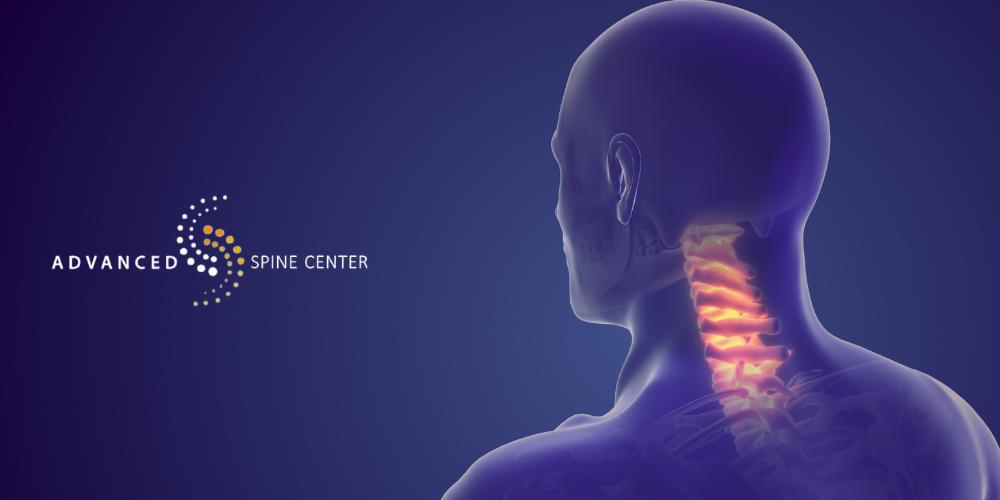
The best treatment for herniated discs in the neck, or cervical herniated discs, often begins with a conservative, nonsurgical approach, focusing on alleviating pain and promoting healing. The choice between nonsurgical and surgical treatment options is determined by the severity of the symptoms, the specific characteristics of the herniation, and the individual’s overall health.
In the following sections, we outline the various treatment options for a cervical slipped disc.
Bulging Disc in Neck Treatments in Plano, TX
Treatment options for a herniated cervical disc may include rest and medications to control pain and swelling in the neck. Your healthcare provider may recommend a soft collar to support your neck. You may benefit from injections or physical therapy. If those options are not helpful, surgery may be needed to remove the bulging portion of your disc.
Below, we go into more detail about the most common conservative treatment options for cervical disc herniation.
- Physical therapy: Tailored exercises can strengthen neck muscles, improve flexibility, and reduce pressure on the nerve.
- Medications: Nonsteroidal anti-inflammatory drugs (NSAIDs), muscle relaxants, and pain relievers can be used to manage pain and inflammation.
- Cervical epidural steroid injections: Corticosteroid injections near the affected area can reduce inflammation and alleviate pain, allowing patients to engage in physical therapy more effectively.
Cervical Herniated Disc Surgery
Many conservative treatments are effective for cervical disc herniation. However, many cases require further intervention to treat the condition fully. Surgical solutions may be necessary for more severe cases of herniation. Orthopedic spine surgeons may employ anterior cervical discectomy, posterior cervical discectomy, or cervical artificial disc replacement as treatments.
- Anterior cervical discectomy: This is the most common surgery for a herniated disc in the neck. It involves removing the problematic disc through an incision in the front of the neck and then stabilizing the area by fusing the adjacent vertebrae.
- Posterior cervical discectomy: This less common approach involves removing part of the herniated disc through an incision in the back of the neck, typically without fusion.
- Cervical artificial disc replacement: Instead of fusion, the herniated disc is replaced with an artificial one, aiming to preserve more natural neck movement.
C4-C5 Disc Bulge Treatment
Common surgical options for a C4-C5 herniated disc include anterior cervical discectomy and fusion (ACDF) or cervical artificial disc replacement. These options both involve removing the herniated disc material and either fusing the vertebrae or implanting an artificial disc.
C5-C6 Disc Bulge Treatment
A C5-C6 herniated or slipped disc requires similar treatments to other herniated discs in the neck. Typically, we begin with conservative measures unless the problem is particularly severe. If surgery is necessary, we may opt for anterior or posterior cervical discectomy. An artificial disc replacement is also an option.
C6-C7 Disc Bulge Treatment
A C6-C7 herniated disc also has similar treatments to other cervical herniated discs. Initial nonsurgical treatments often involve medications, physical therapy, epidural steroid injections, and activity modification. If surgery is necessary, we typically remove the herniated disc to relieve pressure on the compressed spinal nerve. Then, we either fuse the vertebrae or implant an artificial disc to preserve the natural movement of the neck.
Cervical Herniated Disc Recovery Time
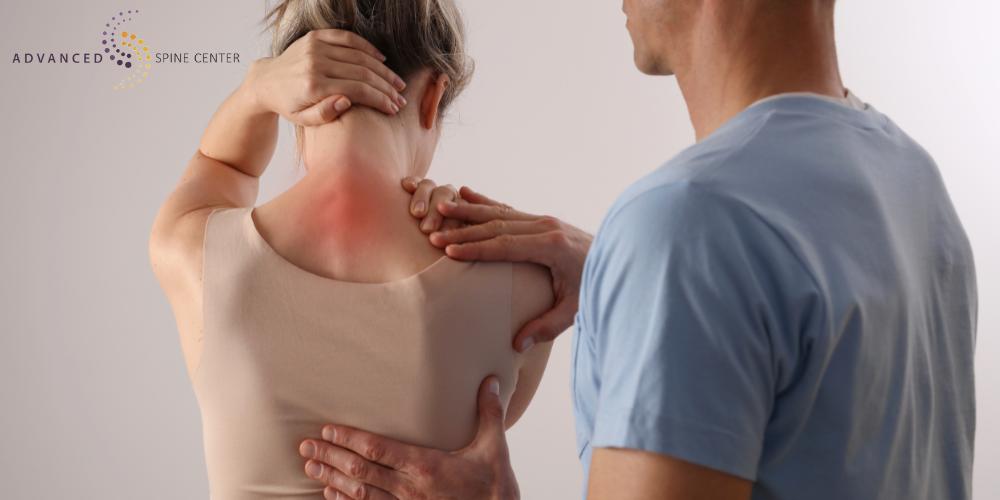
The recovery time for cervical disc herniation depends on several factors. The severity of the herniation plays a big role in how long it may take a patient to recover. If conservative treatments and pain management are the main solutions, patients may recover within a few weeks to a few months.
Recovery time after surgery for a cervical herniated disc can also vary. For anterior cervical discectomy and fusion (ACDF), many patients experience significant relief from symptoms within a few weeks after surgery.
However, it may take several months for the fusion to solidify completely, and full recovery can take up to 6 to 12 months. Recovery from other surgical procedures, such as cervical artificial disc replacement or posterior cervical discectomy, may have similar timelines.
Contact the Advanced Spine Center for Herniated Cervical Disc Treatment in Plano, TX
At the Advanced Spine Center, our dedicated team is committed to providing compassionate care, utilizing cutting-edge technology, and delivering excellent outcomes. Whether you’re seeking conservative treatments or surgical solutions, we are here to support you every step of the way.
Don’t let neck pain and discomfort hold you back any longer. Schedule a consultation with us today and take the first step towards a healthier, pain-free life. Call 972-499-5457 today or submit an online intake form to schedule.
Along with cervical disc herniation, we also treat thoracic and lumbar disc herniation, as well as many other conditions affecting the spine.
